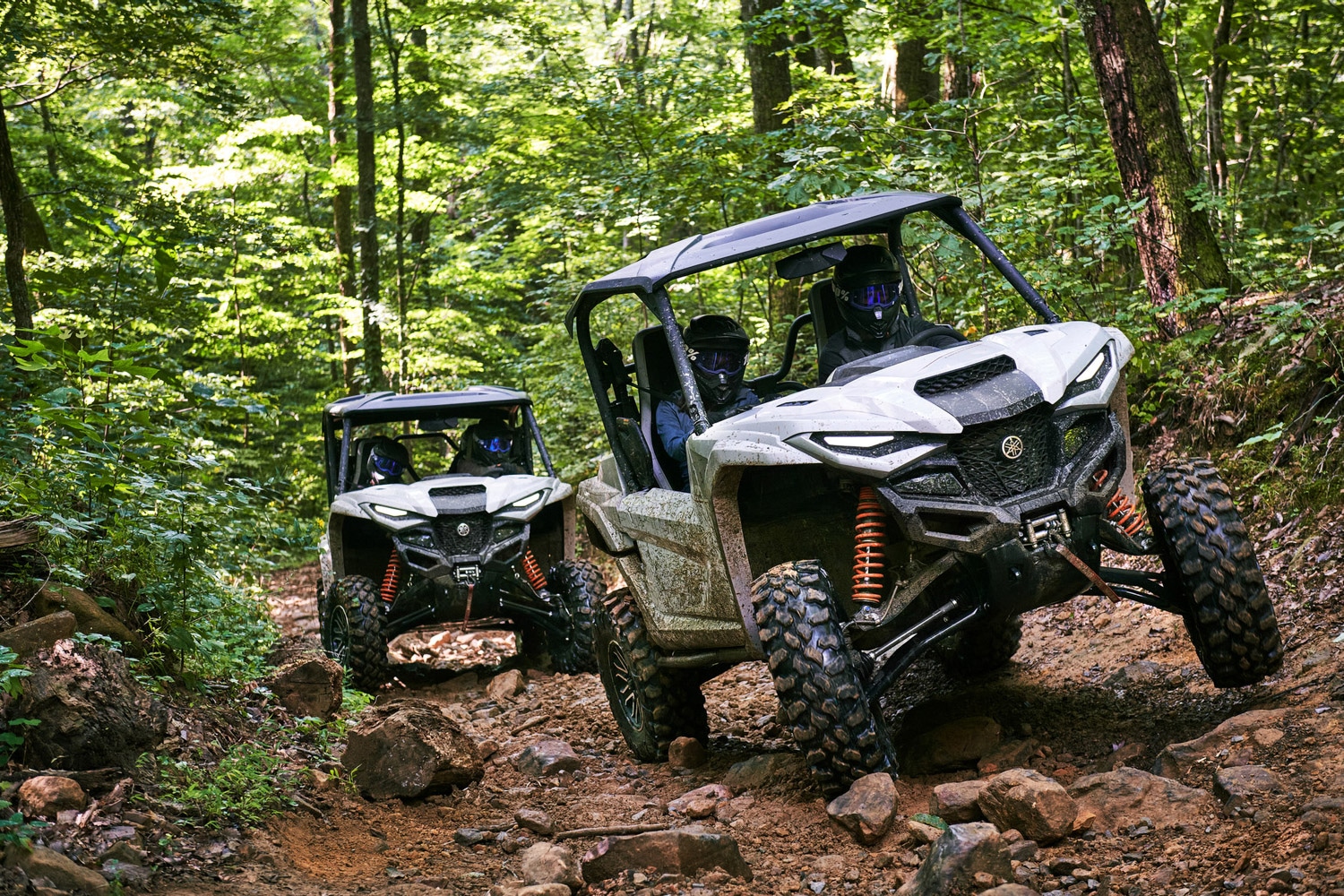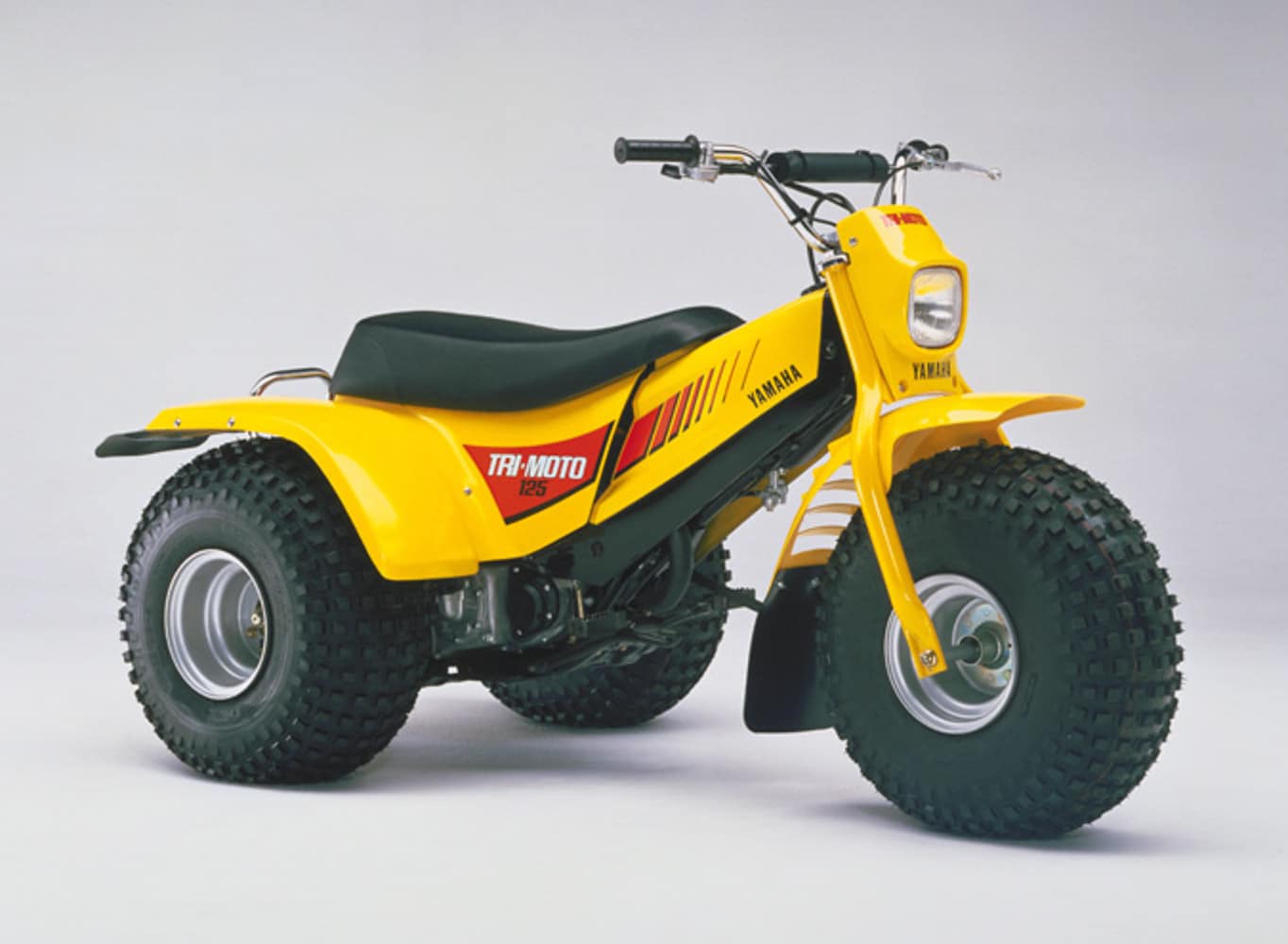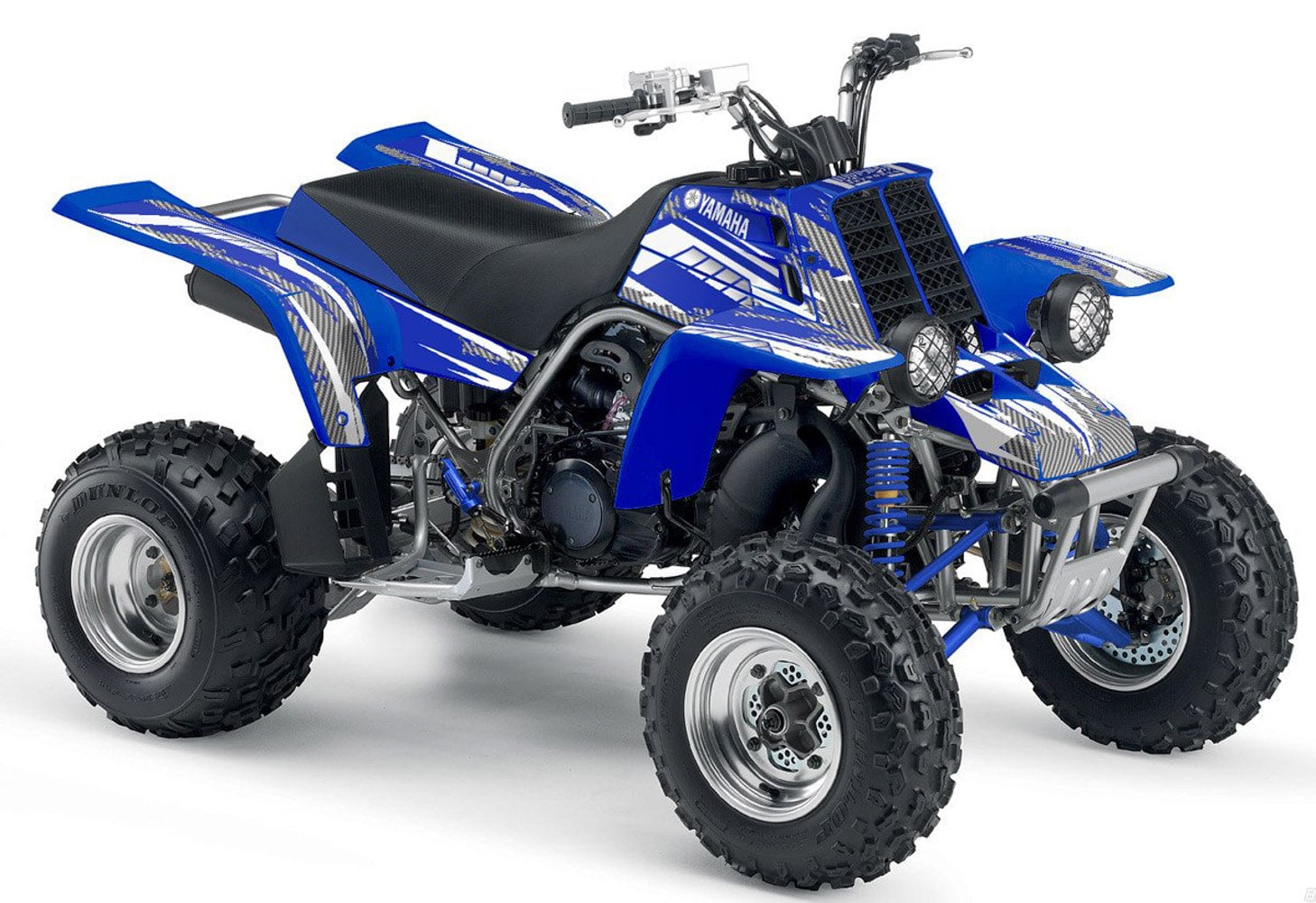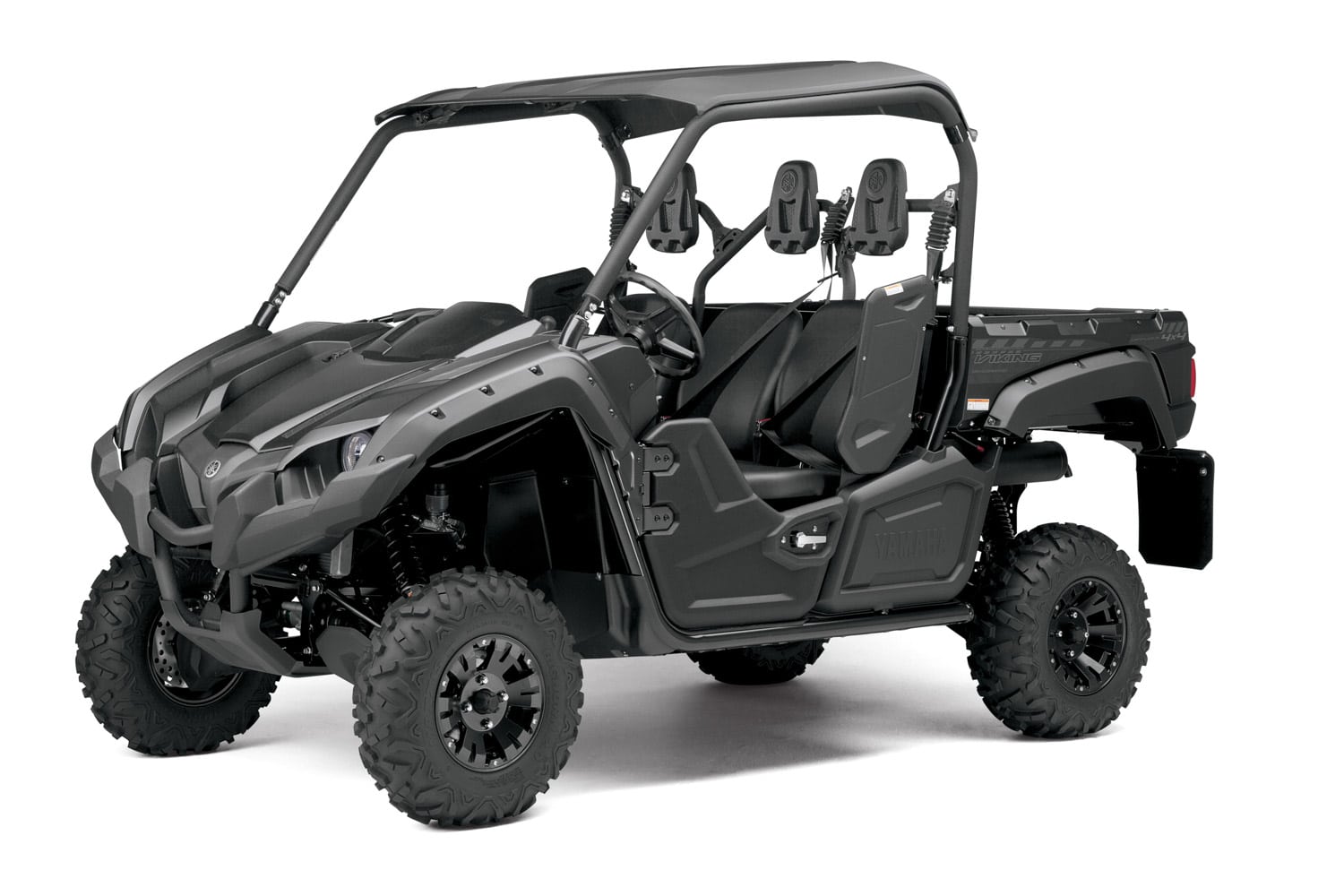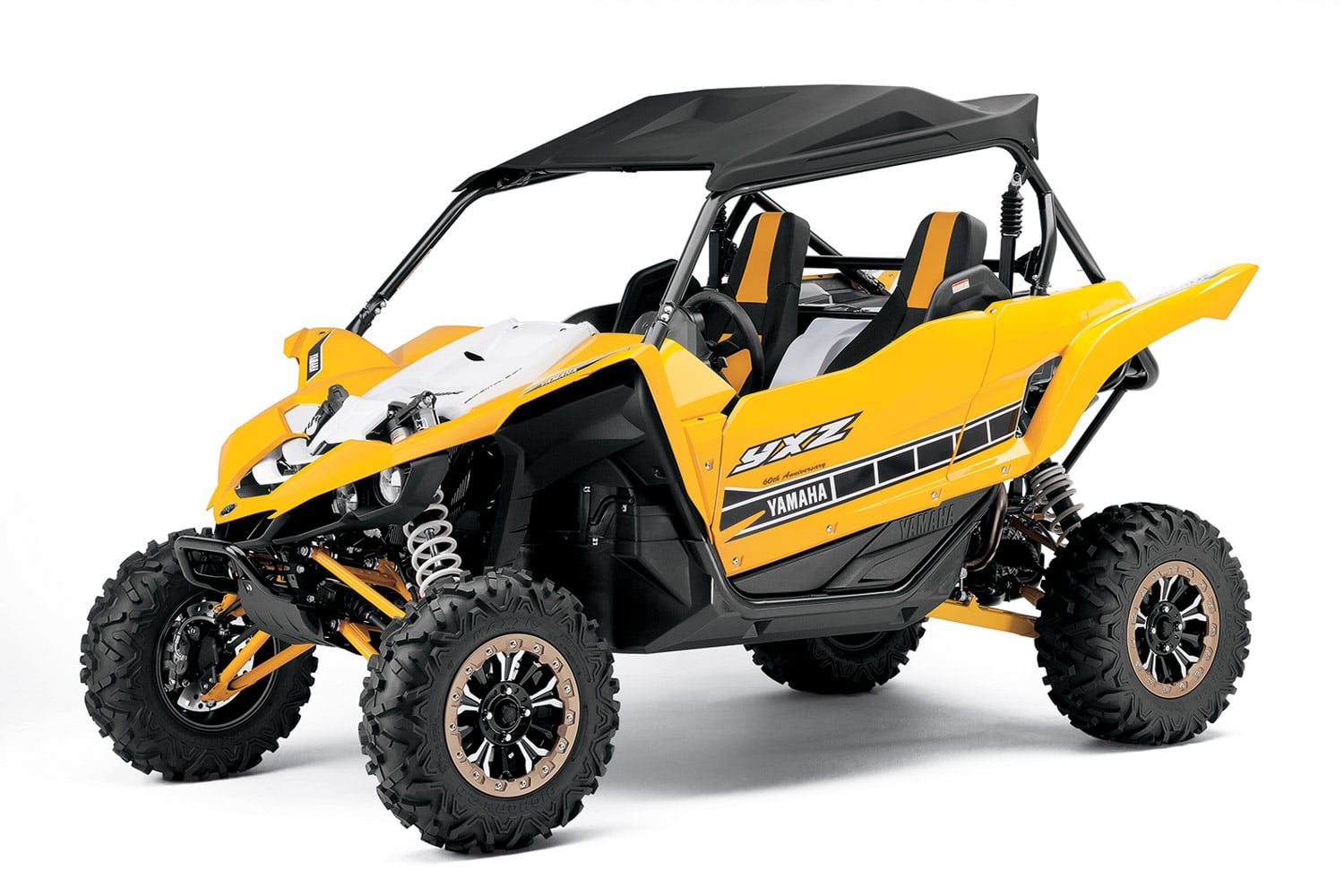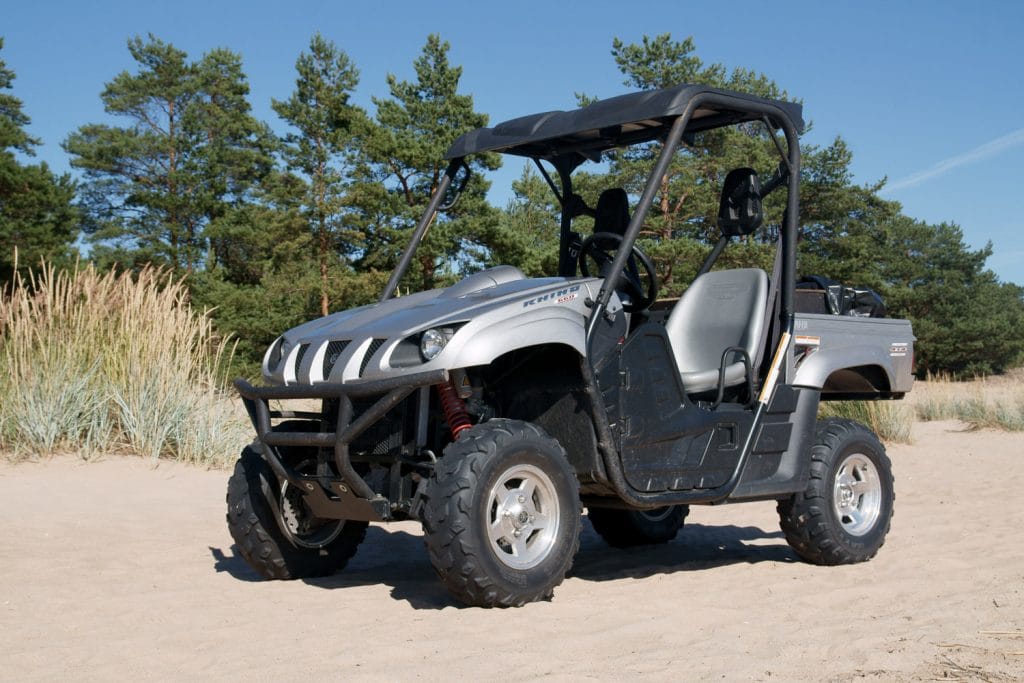If there is a manufacturer who can deserve the builder’s title, it is the Japanese brand Yamaha. We’ll take a look at the company itself, some of the brand’s builders, and finally, the history of Yamaha ATVs and side-by-sides.
Music is on the way, with the arrival of the Yamaha organ manufacturer founded in 1889 in Hamamatsu by Torakusu Yamaha at the age of 38. First observation: Hamamatsu is also the city where Honda will be located a few years later. It is a coincidence, but it’s surprising to see that two flagships of Japanese motorcycling are located in this same medium-sized city.
Torakusu Yamaha is a medical equipment technician with a passion for musical instruments. He will create the first Japanese organ. The tuning fork is already present in the first logo, but it is much later that we will find the three tuning forks entwined.
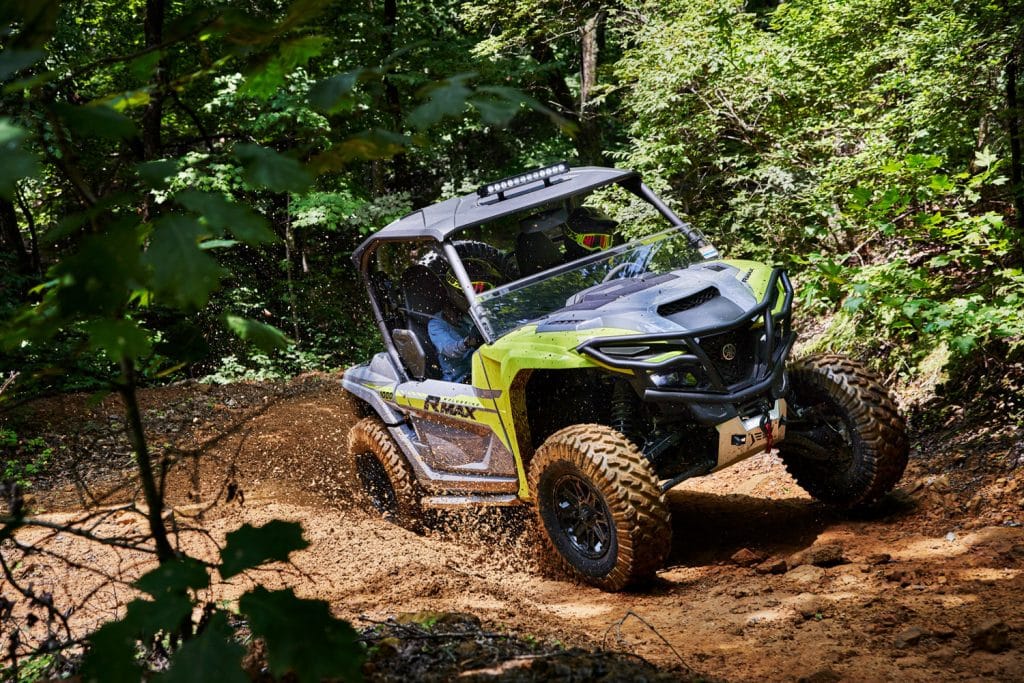
For generations, Canadian children have owned an object with three tuning forks, the famous flute, often required for music lessons in school. An excellent way to familiarize them with the logo!
In 1897, the manufacture became a joint-stock company and changed its name to Nippon Gakki Seizō. It diversified by manufacturing several musical instruments such as pianos, xylophones, and harmonicas. Torakusu Yamaha is developing a factory with avant-garde assembly lines and standardized parts. It is a know-how that will also be useful for motorcycles.
He died in Tokyo on August 8, 1916, at the age of 64. Its vice-president Chiyomaru Amano will take his place and will further develop the musical instrument part until 1927. Then he will be replaced by Kaichi Kawakami, who creates the Yamaha acoustics laboratory. He will have to face the difficult period of the Second World War. During this period, to satisfy the war effort, the creation of musical instruments was replaced by the production of aircraft propellers. The war’s end is synonymous with new needs, and Kaichi is looking for diversification. The motorcycle, an economical vehicle, is one of the projects.
In 1950, President Kaichi Kawakami gave way to his son, Genichi Kawakami, who has worked in the company since 1937. He is passionate about music, but he is also a builder who will split the Nippon Gakki company in two. The vehicle division is named Yamaha to honor the founder. He will launch the first motorcycle, the YA-1, in 1955,
François Morneau, Yamaha regional sales director for Quebec and the Atlantic, likes to recall the words of the president in 1955, for the creation of the brand’s first motorcycle, the YA-1: “We are one of the last Japanese to enter the motorcycle industry, so we have to do it better than others.”
Genichi Kawakami was president of Yamaha Corporation from 1950 to 1977, then returned to business from 1980 to 1983. He passed away in Hamamatsu at the age of 90.
The history of quads and side-by-side at Yamaha
The first quads:
Starting in 1955, Yamaha did a lot of work on developing motorcycles. It wasn’t until 1979 that the first Yamaha three-wheeler made its debut in North America. Nine years after its competitor Honda. The market was well identified, and demand was strong. As usual, the Japanese brand has brought its personal touch to the vehicle. The Tri-Moto (YT125) received a 125cc, 5-speed two-stroke engine with a separate Autolube-type oil supply system. The giant balloon tires served as a suspension. A “Snorkel” type air intake lifted the air intake for passages in water or mud. A variant with a 175cc engine was distributed in some countries the following year. It was not until 1984 to see a 59 cm3 model for young pilots. The Tri-Zinger was a three-wheeler model with an automatic transmission to make driving easier for young pilots.
But the popularity of the three-wheeler concept was declining. It was accused of causing accidents because of its instability. In 1984, this time alongside its winged competitor Honda, Yamaha released a modern four-wheeler with an air-cooled 200cc single-cylinder 4-stroke engine. It was fitted with a 5-speed with reverse gear transmission. Intended for leisure and utility, the quad was equipped with front and rear luggage racks to transport loads. Yamaha had felt the wind coming because three-wheelers were banned in 1988, but the brand with three tuning forks was already firmly established in the four-wheel quad.
That year, they released the Banshee, a vehicle with an explosive character that marked the circuits. The twin-cylinder two-stroke engine was borrowed from the famous RZ350 motorcycle, also called RDLC.
The Yamaha range is now well stocked with the multi-purpose Grizzly and Kodiak, the sporty Raptor 700 R and YFZ450, and the mini Grizzly 90, Raptor 90 and the YFZ50 for young people.
The first side-by-side
Yamaha was a pioneer in the side-by-side field, with the Rhino 660, launched in 2003 for model year 2004. The Rhino was the product of a military vehicle project based on the Grizzly 660 4WD ATV, fitted with a five-valve, single-overhead cam, carbureted engine. The vehicle accommodated a driver and passenger seated side by side, with ample rear space and a 4×4 transmission.
This vehicle has become very popular with many users: farmers, riders, and hunters. With its sporty image, the brand had many sports enthusiasts who wanted to test the machine’s performance, although that was not its vocation. At 54 inches wide, the daring quickly found the machine’s limit. The Rhino was built with a cheaper 450cc version, then a 700cc version powered by the four-valve injection engine.
But the Rhino was a victim of its own success. It was misused, and many accidents were noted. The United States Consumer Product Safety Commission (CPSC) classified the Rhino as an “emerging hazard” due to the high number of severe injuries and fatalities. More than two-thirds of the accidents investigated by the CPSC involved rollovers, many at low speeds on level ground.
In 2009, the CPSC requested a recall for modification that included removing the rear anti-sway bar and the installation of a two-inch spacer to the rear wheels. The Japanese company was the subject of class action and ceased the sale and the creation of new models.
It was a frustrating time for Yamaha fans who saw competitors such as Can-Am, Polaris, Arctic Cat flood the side-by-side vehicle market.
But Yamaha’s policy was clear. It was necessary to wait for the end of all legal proceedings before putting a side-by-side back on the market. This did not prevent the manufacturer from working in the shadows and developing a range of modern SxS, which appeared from 2016 in dealerships, with the sporty YXZ1000R and the more utility / sports Wolverine and Viking.
Two French builders
The Yamaha saga is made by many visionaries who have contributed. But two people took part in the significant development of Yamaha.
Jean-Claude Olivier:
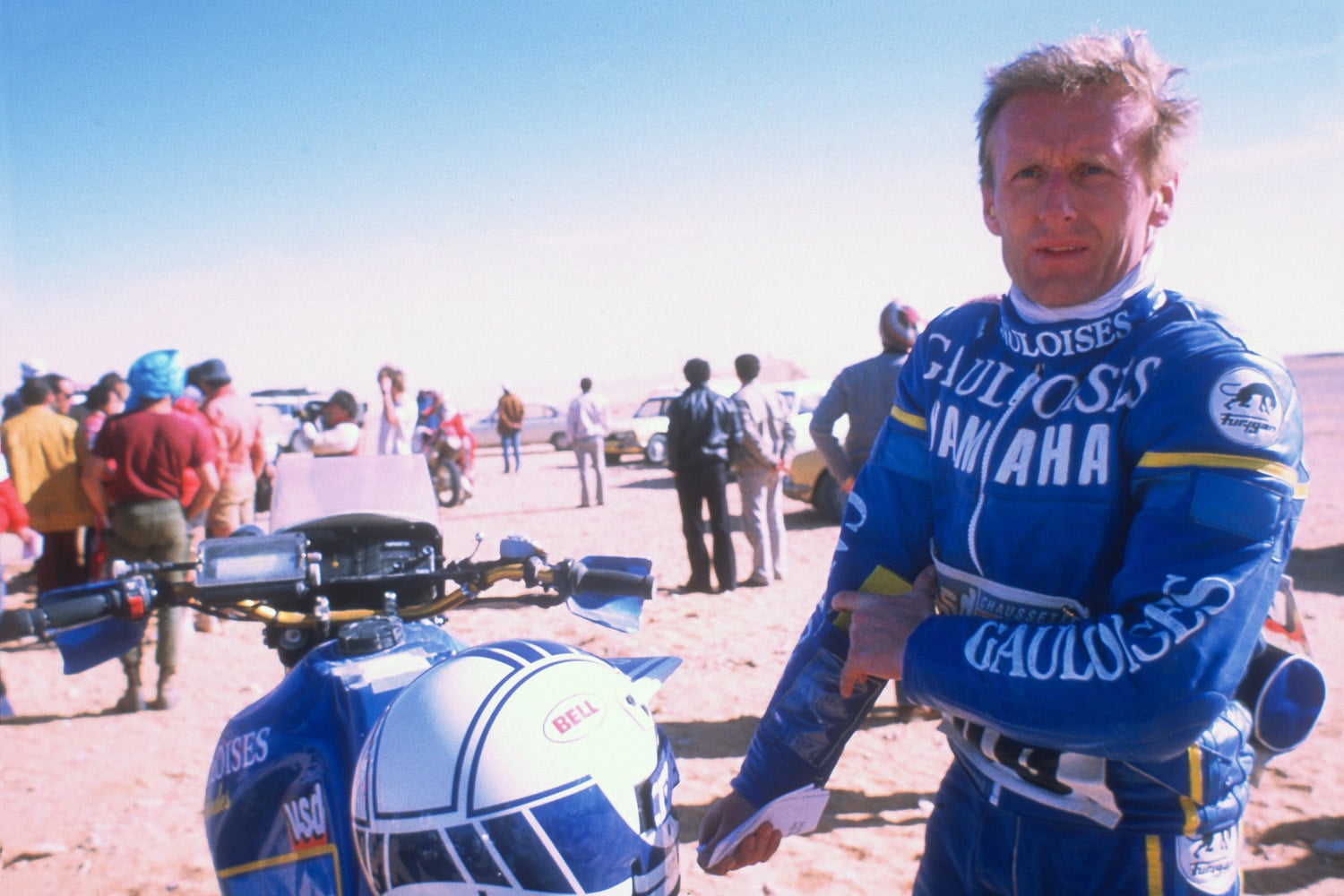
He worked for 45 years for Yamaha in France. He started as the sole representative in 1964 and set up the first dealer network. In 1971, he succeeded in convincing Brigitte Bardot to pose on an AT-1 125 motorcycle at the height of her fame. The photo toured the world and impressed the leaders of Yamaha in Japan. J.C.O., as he is called, was a visionary. He has entered the Paris-Dakar himself nine times and finished second in one edition. He surrounded himself with the best drivers to promote the brand: Patrick Pons, Christian Sarron, Jacky Vimond, Cyril Neveu, and Stéphane Peterhansel. He was committed to rally raids from the X.T. to the Super Ténéré.
The VMAX was reserved for the American market; he developed it in France by presenting it in Saint-Tropez. He discovered the Yamaha BW’s at American races because it was Kenny Roberts’s paddock scooter. He brought it back to France and bought the Motobécane plant (M.B.K.) to build the 50cc in France!
He handed over the keys of Yamaha Motor France to Eric de Seynes in 2010, but his retirement was short-lived; he died in a car accident in 2013.
Eric de Seynes:
Born in Neuilly and descendant of the Hermès family, he could have contented himself with working in the well-known luxury company (he still serves on the Supervisory Board). But Éric de Seynes is a true entrepreneur who has proven his involvement in developing all his life. Passionate about motorcycles, he rubbed shoulders with the Shell single-brand series and the Paris-Dakar competition. A man of communication, he founded a company to develop images using onboard cameras at a time when the Go Pro did not exist.
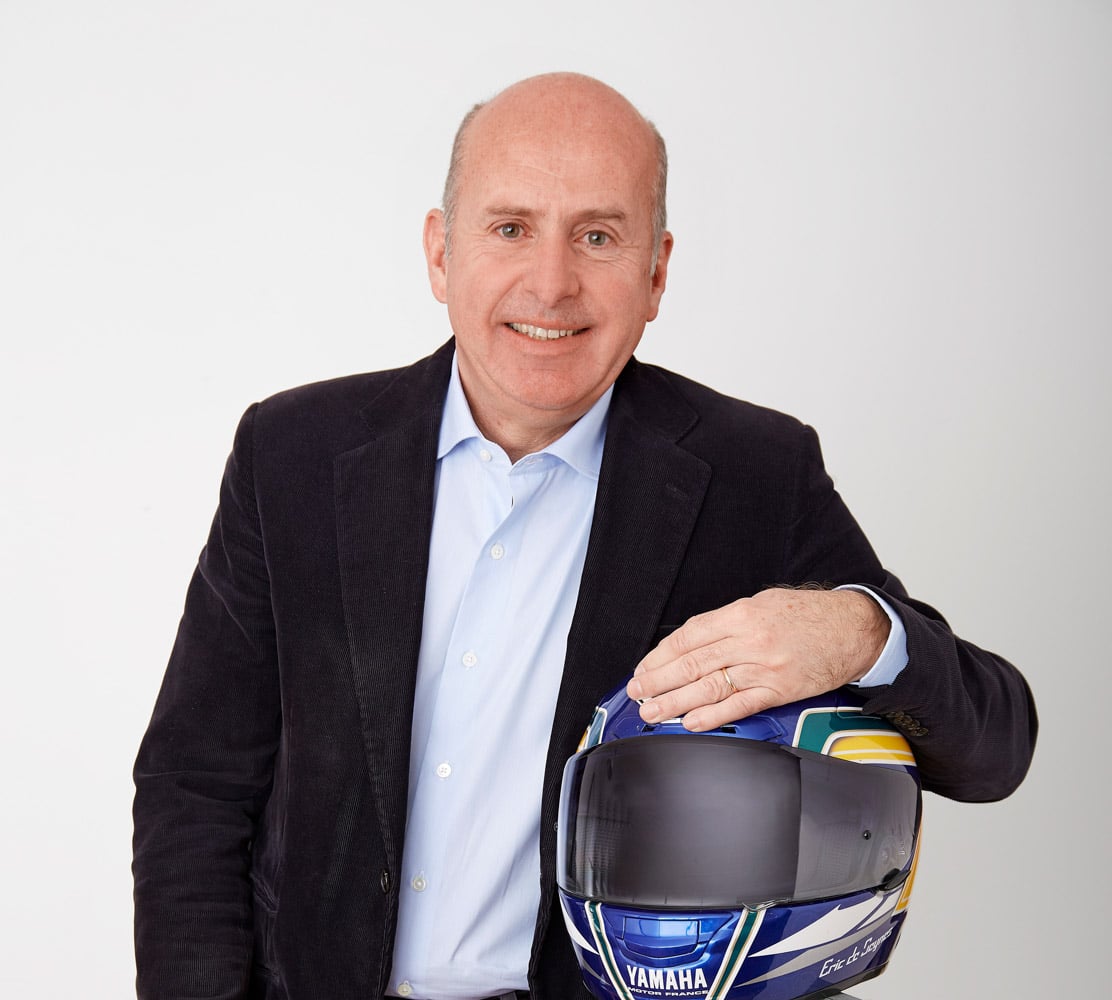
He created the Moto range of Mobil 1 oil and suggested that Yamaha France recommend it. At 29, he was still evolving to become responsible for the sponsorship of SEITA, the French tobacco producer. Among other things, he managed partnerships with the Ligier-Gitanes team in F1 and the Gauloises Blondes Mobil1 team in GP500. In these last two functions, Éric De Seynes regularly negotiated with J.C.O., and he offered to lead the marketing of the French importer Yamaha. It was a dream for him, and he worked in the company until 2001. The entrepreneurial spirit took over him, and he bought a specialized motorcycle press group that he was growing. He created the Moto Tour (a motorcycle Tour de France), developed the Paris Tuning Show and the International Rally Championship under the aegis of the F.I.M.
In 2008, he sold his stakes and returned to Yamaha Motor France. Jean-Claude Olivier wanted to retire, and he had chosen Eric de Seynes to replace him. In 2009, he took the reins of the importer and continued his ascent. In 2010, he became president of the Motorcycle Branch of the Chambre Syndicale Internationale de l’Automobile et du Motocycle. In 2014, he was appointed Chief Operating Officer and member of the Executive Committee of Yamaha Motor Europe.
But his progression was not over, and in 2016 he was appointed to YAMAHA MOTOR Corporation Ltd, the parent company, as Group Executive Officer. It was the first time that a European / American had reached this level in the Japanese group led by Yoshihiro Hidaka.


